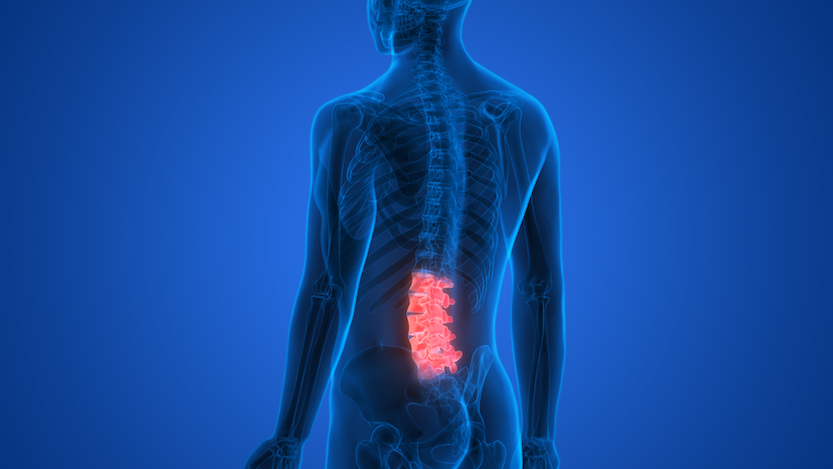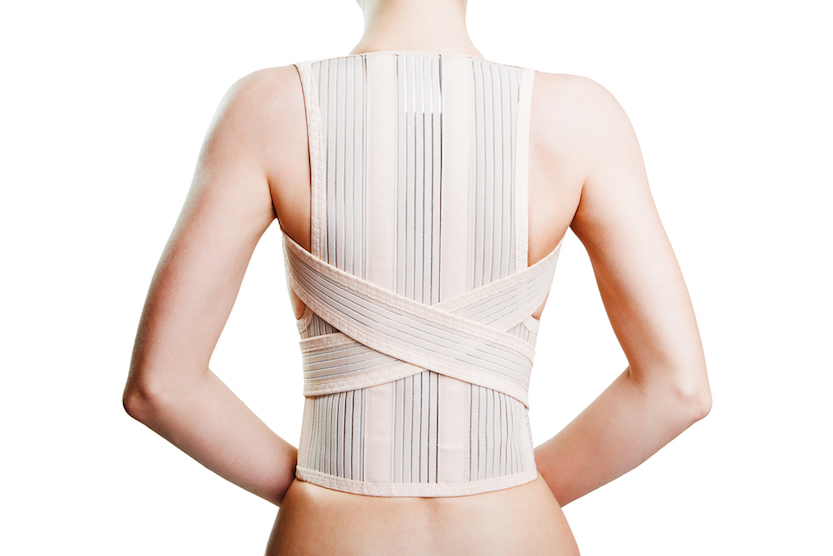



Get new exclusive access to healthcare business reports & breaking news




The scoliosis market is expected to experience exponential growth over the course of the next decade.
At the moment, 2-3% of the global population suffers from scoliosis, a number which is expected to rise in the future.
One reason for this is increased awareness, which will make more of the population aware of the signs and lead more people to seek treatment for both invasive and non-invasive treatments.
More sophisticated healthcare infrastructures could also contribute to market growth, with North America and Western Europe expected to experience the largest market share due to the systems they currently have in place.
Around 30,000 people already have tried a scoliosis brace. About 38,000 people have decided to go one step further to receive spinal fusion surgery. These numbers are predicted to increase in the next decade.
A higher general prevalence of scoliosis will also contribute to the growing market, with the demand for more innovative treatments expected to rise. This, in turn, is expected to drive an increase in the continued discovery and implementation of technological advancements and product launches in the scoliosis field. This is great news for market investors!
Scoliosis is a medical term used to explain a sideways curvature of the spine. It most often occurs during the growth spurt that takes place just before puberty, but it can also occur earlier or later than this.
Luckily, most people who have scoliosis experience mild symptoms. If this is the case, their curvature will be monitored using X-rays to see if the curve is worsening. In many cases, no treatment is necessary, and an individual will be able to live with their scoliosis without any side effects. Others may need a scoliosis brace to stop the curve from worsening.
In severe cases, scoliosis can continue to worsen as someone ages, and can be completely disabling. The resulting pain and discomfort can make it difficult to take part in everyday activities.
In some especially rare cases of scoliosis, the curvature of the spine can get so bad that it reduces the amount of space within the chest, making it difficult for lungs to function properly. If this is the case, then a scoliosis brace will probably not work, and surgery may be the only, or preferred, option.
Left untreated, any form of scoliosis can lead to permanent deformity, disc damage, and even neurological damage. For that reason, early interventions are essential to help improve outcomes for scoliosis sufferers. A scoliosis brace is just one of many options available.
The first symptom of scoliosis that people usually notice is a change in the appearance of the back, usually a curvature in the spine. If caught early enough, this symptom may need no necessary treatment, or a non-invasive scoliosis brace can be used to make the patient more comfortable..
Other typical symptoms include:
Adults with scoliosis may also report feeling back pain. Although young people with scoliosis may experience some level of discomfort, this is likely to be less severe.


In most cases of scoliosis, a cause cannot be found. This is known as idiopathic scoliosis.
In a small number of scoliosis cases, however, the cause can be attributed to other medical conditions, which include:
It is extremely rare, but a small number of babies can be born with scoliosis due to a problem with the development of the spine in the womb.
In adults, scoliosis can be caused by changes in the discs and joints of the spine, or from a reduction in bone density. Even if scoliosis was present in a person’s childhood, some adults only learn of their scoliosis diagnosis as adults due to the worsening over time of previously undiagnosed or untreated scoliosis .
A scoliosis brace is a stiff plastic jacket that fits around the torso. It starts from underneath the arms, and ends up at the hips, with straps to keep it in place and straighten the spine.
They work best when a patient is still growing, before the curve becomes too severe for a scoliosis brace to work. The bracing period will usually end after a person stops growing, which can be anywhere from a couple of years to several.


In some cases, if a professional notices that a brace isn’t helping, bracing will be stopped prematurely. If this happens, surgery will often be the next step solution.
Since this is a personalized medical device, and scoliosis affects people to different severities, there are many scoliosis brace options available. We will go over more information about the specific types in a moment, but they are often split into two categories: orthotic or orthosis.
An orthotic scoliosis brace, sometimes known as a dynamic brace, is designed to support, straighten or improve the functioning of the spine.
An orthosis scoliosis brace, the most popular kind, is a type of brace that either prevents or assists with movement of the spine. This is sometimes known as a rigid scoliosis brace.
Wilmington Brace and Boston Brace
A Wilmington or Boston scoliosis brace is designed like a jacket to treat moderate curves in the rib cage and lower spine. These are perhaps the most popular option when a scoliosis brace is included in a treatment plan due to their excellent track records, and the research that backs them up.
Worn underneath clothing, these scoliosis braces are made of a lightweight rigid plastic. They cover the torso from hips to armpit and fitted to the body. Special shaping and padding is employed to adjust the spine’s alignment in the brace.
The Wilmington scoliosis brace closes in the front, and is custom molded to each individual’s body. An orthotist will make a plaster mold of the torso that can then be used to create a brace.
The Boston scoliosis brace, on the other hand, closes in the back. It’s available in a variety of different sizes. As with the Wilmington brace, it is customized using pads and cut-outs.
Each of these types of scoliosis brace needs to be worn between12 and 20 hours a day on average.
Rigo-Cheneau Brace
The rigo-cheneau scoliosis brace is a custom plastic brace that is sometimes used alongside the Schroth method of physical therapy. This therapy involves using tailored exercises to meet each patient’s spine curvature to return the curved spine to a more natural position.
Charleston Bending Brace
This is type of scoliosis brace is reserved to be worn only at night.
It’s similar to the jacket-style scoliosis brace, in that it is a solid piece of plastic used to hold the back into position. The difference, however, is that instead of keeping the person upright, it’s shaped to overcorrect the curve by bending the spine to one side.
This type of scoliosis brace is reserved specifically to help people with C-shaped curves in their lower back.
Milwaukee Brace
The Milwaukee brace was the first brace created specifically to treat scoliosis. It’s a solid piece of plastic that fits around the hips and waist with vertical bars in the front and back that attach to a ring around the neck.
As with the other braces, this scoliosis brace should be worn between 12-20 hours a day. Due to the fact that it can be uncomfortable and harder to wear, however, it is rarely used in modern medicine.
SpineCor
SpineCor is a flexible, dynamic scoliosis brace that uses bands and a cotton vest. This makes it more comfortable for the individual, but it does show reduced effectiveness when compared with hard scoliosis braces.
One misconception about scoliosis braces is that they can improve a child’s spine, but this isn’t the case. Occasionally, improvements might be visible in an X-ray when a patient wears a brace regularly, but this is usually only temporary.
A patient more typically wears a scoliosis brace with the intended outcome of slowing down the progression of a curve in a growing child.
Success rates of this treatment are between 50 and 85 percent, and largely depend on the patient’s compliance with wearing the scoliosis brace.
A scoliosis brace may also help prevent further curving in teenagers and adults who have stopped growing by offering them much needed support.
It may be used as an aid to help with back pain in the lead up to surgery, or to see if a scoliosis brace provides enough benefit to avoid surgical intervention.
In all cases, a scoliosis brace works by using internal pads to push either side of the body at the levels of the spine most affected by the curvature. This is regularly monitored so that doctors can determine whether the brace is working, or if adjustments need to be made.
Many patients may initially believe that their scoliosis brace hasn’t worked because the impact isn’t immediately obvious. They may be weaned off it to find that the degree of their curve hasn’t changed, leaving them feeling like they have completely wasted their time.
If the curve of the patient’s spine does remain the same, however, this proves that the brace has worked. This is because the scoliosis did not progress to the point of needing surgery.
The orthopedic surgeon will start to gradually wean an individual out of the brace when the patient has finished growing. Monitoring then continues to determine whether the curve has further progressed.
Whether a scoliosis brace will work depends on the individual, but research seems to suggest that they can be effective in some cases.
One study assessing the results of a scoliosis brace on 36 females with adolescent idiopathic scoliosis(AIS) found that a night brace is effective in the treatment of AIS patients with curves of less than 35 degrees.
Findings from the SRS Annual Meeting in September 2017 concluded with a number of findings suggesting that a scoliosis brace can be an effective treatment for someone suffering from scoliosis. These findings include:
The same annual meeting found that increased rotational deformity in the spine may decrease the success of a brace. They also found that people with larger spines upon completion of growth are more likely to see slow progression into adulthood.
Ultimately, the effectiveness of brace treatment in someone who suffers from scoliosis will depend on the needs of the individual.
For some, a scoliosis brace alone is enough to control the curvature and allow the individual to live a normal life. In other cases, the use of a brace may be ineffective, and surgery may be the only option for an improved quality of life.
To summarize, scoliosis is a condition that affects individuals—usually children or adolescents—to varying degrees, causing a curvature in the spine.
One of the prevalent treatment options at the moment is a non-invasive scoliosis brace, which offers excellent opportunities for growth as the market develops more effective treatments. Innovative surgeries, such as spinal fusions to repair the curvature, are also effectively carried out and lead to much of the scoliosis market’s current growth.
If the prevalence of scoliosis continues to rise, as predicted, the demand for more technological advances and new treatment options over time will increase.
These combined factors mean that now is the perfect time to get involved in the scoliosis market in order to be a part of the growth. Watch your profits expand in the scoliosis market in a way they never before have done.